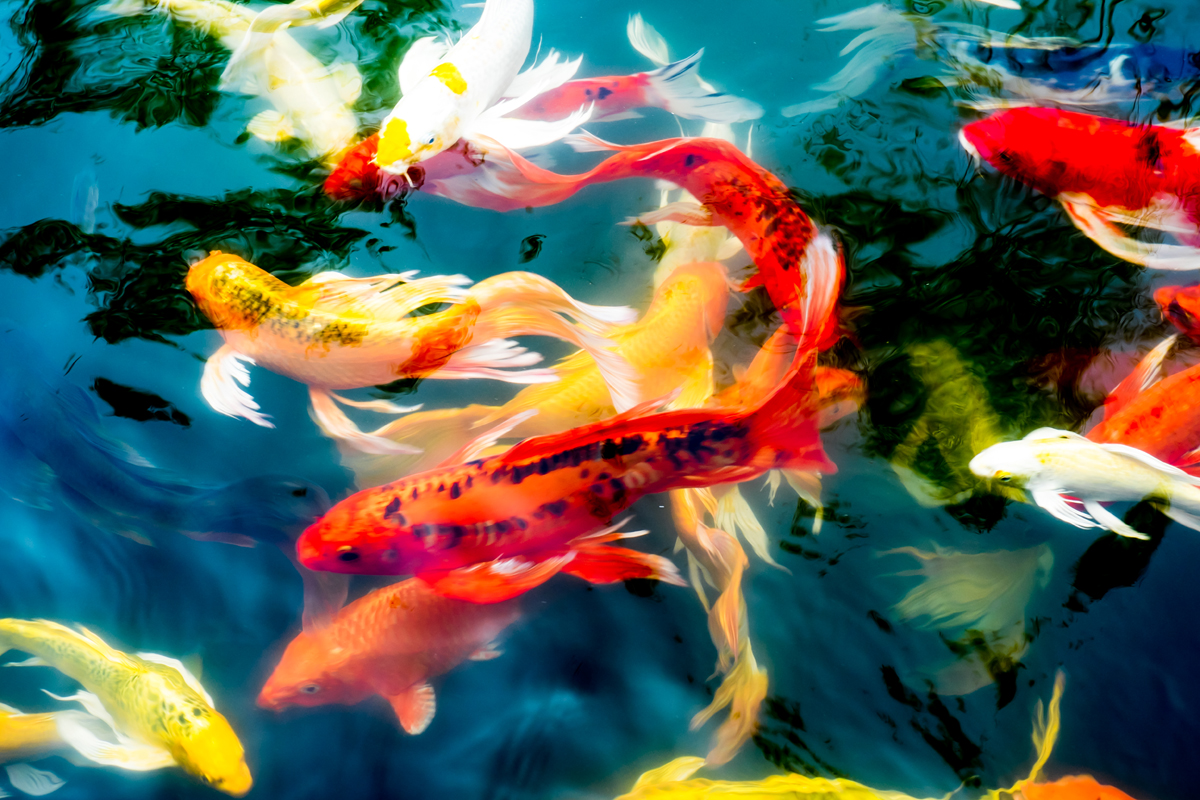How Deep Should A Koi Pond Be?
The koi pond experts recommend keeping your pond at least 3 feet deep. This meets the minimum requirement for koi pond depth.
How Deep Should Your Koi Pond Be?
It’s well known that Koi fish desire lots of space to swim. The ideal size for a koi pond is 1,000-plus gallons of water. By that measure, a six foot by eight foot pond will yield exactly 1,077 gallons.
A pond of this size is perfect for no more than five average-sized Koi. It goes without saying the more Koi added to the pond, the larger the space needs to be. If you wish to have 15 Koi, then your ponds needs at least 3,200 gallons.
Koi Pond Fundamentals
Each and every koi pond will be designed to keep your fish alive and thriving. Professional installers may recommend that your pond meet certain criteria to provide the best situation possible for your fish. Most koi ponds will be larger than fishless ponds.
Average size requirements:
- 3 or more feet deep.
- No less than 1,000 gallons.
- 25 square feet of pond for each koi.
Adding shade to the area is crucial for the koi’s overall health. If the pond sits in direct sunlight, then it’s suggested to add some floating plants to the pond. Most of the pond area should be shaded to give your koi an escape from the sun.
Water plants are essential parts of any koi pond. These plants will help to balance the ecosystem, which creates a natural home for the fish. There are some plants that are oxygenators. These plants help your fish to breathe. Koi fish also eat many of these floating plants.
As long as your pond is not overstocked, these fish do not need to be fed. They can live off insects, algae and other food sources in their environment. Certain plants can be included as food sources.
Aeration
Of course, all fish require oxygen for survival. Based on the pond size, though, the amount of plants that are growing compared to the amount of fish could cause you to need aeration. Aeration is the process of circulating oxygen into the water.
Both waterfalls and fountains are terrific ways to aerate your pond. The water motion naturally allows for the circulation of oxygen. Equipment, such as jets and pumps, can be added to increase circulation.
Filtration
Working filters help to keep your pond clear and clean. Since Koi produce lots of waste, filters are a necessity. The two types of filtration are mechanical and biological.
Mechanical filtration traps debris and waste. Pump baskets, bottom drains and skimmers all work well for mechanical filtration. Biological filters work by using beneficial bacteria to turn toxins into harmless substances.
Water Quality
You will want to monitor water temperatures and pH levels. The best temperature range for Koi is between 39 F and 68 F. pH levels should always remain between 7.0-7.8.
Koi Pond Additions
Home and business owners can enhance koi ponds with several additions. Of course, this means the price tag will rise, but the visual appeal of your pond will be unmatched.
Here are some of the most common koi pond additions:
- Aquatic plants.
- Auto-fill system.
- Waterfalls.
- Underwater lights.
- Fountains.
- Steam.
- Ion-Gen water cleaner.
- And more!
Koi Pond Design & Installation
Start creating your very own Outdoor Fireplace or Outdoor Kitchen in Scottsdale or Phoenix, Arizona by giving Arte Verde a call today at (602) 618-0688 to schedule a free consultation!



